Views: 416

The founder of the church was a Grand Hetman and Vilnius Voivode of the Grand Duchy of Lithuania. The 17th-century church’s façade is modest, however the interior is richly ornate with a number of stucco mouldings
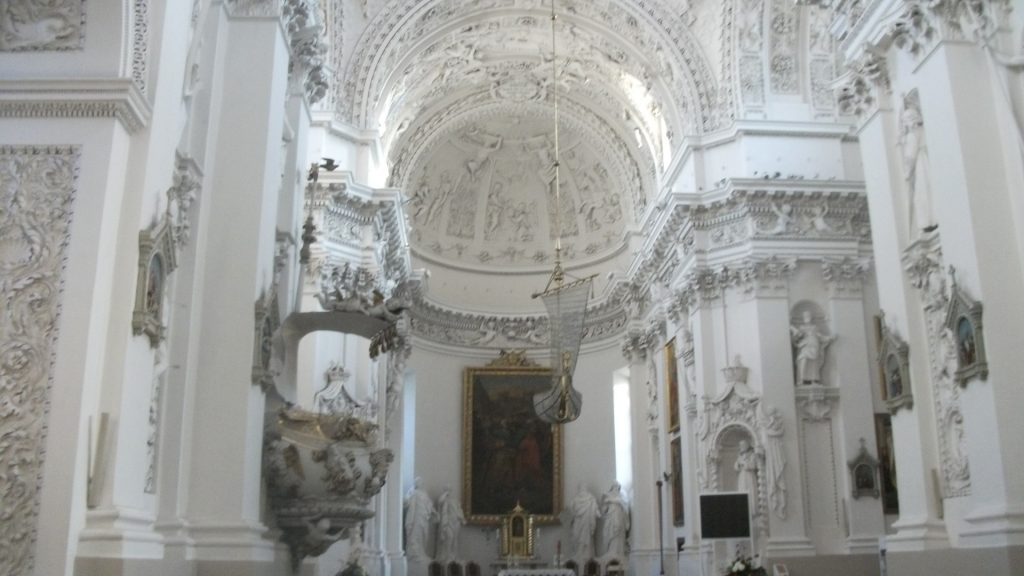
The church was built to mark the liberation of Vilnius from Moscow (The 1655-1661 War) and the founder’s own escape from the hands of rebellious soldiers. The interior was created by the Italians G. P. Perti and G. M. Galli, who decorated it with more than 2,000 stucco mouldings

The chandelier was created in 1905 in Riga and represents the Biblical Noah’s ark
All photos are copyrighted by Vladislav B. Sotirovic
© Vladislav B. Sotirovic 2018

RELATED POSTS

After being baptized in 1251 into the Roman Catholicism in 1251, Grand Duke Mindaugas built the first cathedral in Vilnius on the site of the present-day Cathedral Basilica (Cathedral of St. Stanislaus and St. Vladislaus). Before that, in pagan times an altar, a sacred fire or even a Perkūnas sanctuary was located on the site of today's Cathedral Basilica The creation of the Lithuanian state started as late as the 13th century. Its first outstanding ruler Mindaugas was baptized in 1251 and crowned King of Lithuania on July 6th, 1253. Today, July 6th is a national holiday of Lithuanian statehood It is assumed that it was Mindaugas who built the first Cathedral in Vilnius. Traces of the original Cathedral incorporating Romanesque style features have been discovered in the vaults of the present Cathedral. After Mindaugas's death, the Christian (Roman Catholic) Cathedral was turned into a place of pagan worship. The author ...
Continue Reading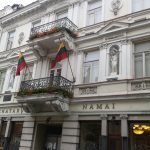
A museum operates today in the House of Signatories, along with a memorial hall where the act of Lithuania's independence was signed on February 16th, 1918 when Lithuania was under the German occupation and administration during WWI (1915-1918)The first floor of the house with statues symbolizing agriculture and fishing is very decorative. Niches on the second floor hold two male bustsHaving acquired this house in the late 19th century, Karol Sztral reconstructed it according to architect Aleksei Polozov's project in the style of HistoricismAll photos are copyrighted by Vladislav B. Sotirovic© Vladislav B. Sotirovic 2019
Continue Reading
The chapel was built in 1624-1636 to hold the remains of St. Casimir who was canonized in 1604. The chapel is part of the Cathedral Basilica in Vilnius The construction of the Early Roman Baroque-style chapel was funded by rulers Sigismund and Vladislaus Vasa. It was a place where the Grand Dukes of Lithuania prayed and could be reached by a corridor joined to the Lower CastleThe chapel is the work of Italian masters and one of the most beautiful Baroque mausoleums in Lithuania All photos are copyrighted by Vladislav B. Sotirovic© Vladislav B. Sotirovic 2019
Continue Reading
A geographical centre of Europe - 25 km far from Vilnius. From 2015 Summer You will get a special Certificate that you have visited the Geographical center of Europe. Don't miss the chance to get it for freeThe Baltic States of Europe - Estonia, Latvia & LithuaniaVytis (The Knight) - The Coat of Arm of both historical Grand Duchy of Lithuania and present-day the Republic of LithuaniaOrigins of images: Facebook, Twitter, Wikimedia, Wikipedia, Flickr, Google, Imageinjection & Pinterest.Read our Disclaimer/Legal Statement!Donate to Support UsWe would like to ask you to consider a small donation to help our team keep working.
Continue Reading
In 1986 the east winf of the Old Arsenal was restored. It houses the Museum of Applied Art and Design. The Old Arsenal enables the visitors to feel the ambience of the Renaissance Vilnius The building of the Old Arsenal was remodelled by Sigismund Augustus (second half of the 16th century) in the Renaissance style, mainly by adding a third floor (the attic), decorated in double arch niches. In was an enormous building, reputed to be the largest in the Polish-Lithuanian Commonwealth The Old Arsenal was badly damaged during the war with Russia in 1655-1661, and remained a virtual ruin until the late 18th century when in 1780 was rebuilt and burned down at the end of WWIIAll photos are copyrighted by Vladislav B. Sotirovic© Vladislav B. Sotirovic 2020
Continue Reading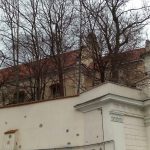
The church was originally Gothic but in 1750-1755 it was restored according to design by Franz Ignatius Hoffer and acquired some late Baroque and Rococo featuresNearby the church building stand the 17th-18th-century buildings of the Carmelite Monastery which had a rich archive and library. A study centre opereted there. In 1797-1944 it housed the Ecclesiastical Seminary Today the buildings are used by the Centre for Book Research and Libraries, and the church is closed to the publicAll photos are copyrighted by Vladislav B. Sotirovic© Vladislav B. Sotirovic 2020
Continue Reading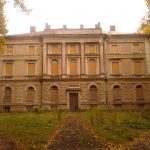
The historical building in Tyzenhauzų Str. in VilniusTyzenhauzų Str. building in VilniusTyzenhauzų Str. building in VilniusAll photos are copyrighted by Vladislav B. Sotirovic© Vladislav B. Sotirovic 2021
Continue Reading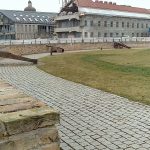
The architect of the Vilnius Bastion is unknown. The building that rose in the early 17th century is attributed to the period of late Renaissance and in that period Vilnius did not have a municipal architectThe wars of the mid-17th century and the 18th century weakened the military power of the Grand Duchy of Lithuania. The army led by the Russian Emperor Aleksey Mikhailovich approached Vilnius in August 1655 and seized the cityWhen Vilnius was liberated in 1660, the city's defensive fortifications needed repair. However, there was not enough funds and the citizens were unable to maintain defensive fortifications, supply them with arms and gunpowder and provide securityAll photos are copyrighted by Vladislav B. Sotirovic© Vladislav B. Sotirovic 2020
Continue Reading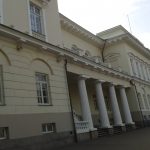
The main façade of the Presidential Palace (Prezidentura) in Vilnius at Simonas Daukantas SquareThe presidential coat-of-arms is adorning the entrance to the President's Chancellery on University StreetThe Inner Courtyard of the Presidential Palace - the palace of the President of the Republic of Lithuania since 1997All photos are copyrighted by Vladislav B. Sotirovic© Vladislav B. Sotirovic 2018
Continue Reading
The church received its current form in 1738-1749 after fires in the cityThe church was rebuilted by Vilnius Baroque architect J. K. Glaubitz in the ornate Late Baroque style, and installed 24 altars insite The church bell tower received its current shape in 1737. The bell tower is 68 m tall. It is the tallest building in Vilnius Old TownAll photos are copyrighted by Vladislav B. Sotirovic© Vladislav B. Sotirovic 2018
Continue Reading
In this house, belonging at the time to a university professor, Adam Mickiewicz stayed for a short period in 1822 and completed the poem "Gražina"It is small museum of three rooms but it is currently being expended. Among the exhibits are several portraits of Adam Mickiewicz and some period furniture, including a table and chair from Kaunas and a chair from Paris that the poet himself usedThe exhibition includes among the many volumes of his work in foreign languages, for instance, a Persian translation of his "Sonnets from the Crimea" All photos are copyrighted by Vladislav B. Sotirovic© Vladislav B. Sotirovic 2020
Continue Reading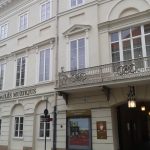
The courtyard of the palace. In 1834 the building was reconstructed and acquired its present appearance. In 1919 it was given to the university and was home to several well-known professors The façade is harmonious, moderately decorated. The façades of the servants' house facing the courtyard and Bokšto Str. (No. 5) Today the palace houses the Vilnius Picture Gallery and the Lithuanian Art MuseumAll photos are copyrighted by Vladislav B. Sotirovic© Vladislav B. Sotirovic 2019
Continue Reading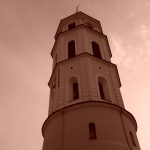
Its foundations are superimposed on the remains of a square tower, one of the oldest brick buildings in Lithuania, whose bricks are bound in the pre-Cothis (Baltic) manner An oval four-story tower with loopholes was built on these remains. Originally, it was a defensive tower of the Lower CastleThe underground square part dates from the 13th century, and the round part - from the late 14th century All photos are copyrighted by Vladislav B. Sotirovic© Vladislav B. Sotirovic 2019
Continue Reading
Three crosses are believed to have first been erected on this hill above the Old Town of Vilnius in the 17th century to commemorate a group of 14 Franciscan monks from a nearby monastery who were martyred in the 14th century The monument has changed several times. The present one was built in 1989 to replace one that had been removed by the Soviet authorities in the 1950sOne of the best panoramic views of the Old Town of Vilnius is offered from the Hill of Three CrossesAll photos are copyrighted by Vladislav B. Sotirovic© Vladislav B. Sotirovic 2020
Continue Reading
Vilnius University was the first observatory center in Eastern Europe and the 4th in the worldWhite Hall now houses unique astronomical instruments and a reading roomThe narrow staircase leads to the observatory tower, which reveals a panorama of the Vilnius Old TownAll photos are copyrighted by Vladislav B. Sotirovic© Vladislav B. Sotirovic 2023
Continue Reading
Mindaugas Bridge is constructed in 2003. It has the name of the only Lithuanian King crowned on July 6th, 1253On the foothill on the left riverside of Neris, there is a Renaissance building of Old Arsenal followed by the buildings of House of the Castle Keeper and New Arsenal On the right riverside of Neris, a new business center of Vilnius is growing during the last two decadesAll photos are copyrighted by Vladislav B. Sotirovic© Vladislav B. Sotirovic 2019
Continue Reading
This is the first Evangelical Lutheran Church (Kirche) built-in Vilnius in 1555 on the initiative of the Chancellor of the Grand Duchy of Lithuania Nicholas Radziwiłł the Black. In front of the church, there is a monument erected to Martin Luther The church was rebuilt in 1662 and substantially reconstructed in 1738-1744. In 1944 it was closed down. In 1993 it was returned to the parishioners and renovatedThe church has a single nave and an original pentagonal shape. Its magnificent high altar was designed by German Protestant architect Jan (Johan) Krzysztof GlaubitzAll photos are copyrighted by Vladislav B. Sotirovic© Vladislav B. Sotirovic 2019
Continue Reading
According to legend, the monastery and wooden church were built circa 1332 in the burial spot of the Franciscan monks that had been martyred by Lithuanian pagansThe building complex is formed in the mid-18th century. Today, the church possess six Late Baroque-style altars, with the main altar having a picture of the Holy Virgin Mary that is considered to be miraculous. A copy of the picture is painted on the façade in 1742 The monument to famous Lithuanian neo-Classicist architect Laurinas Gucevičius, the founder of Vilnius neo-Classicism, is erected in 1994 in the square in front of the church. All photos are copyrighted by Vladislav B. Sotirovic© Vladislav B. Sotirovic 2020
Continue Reading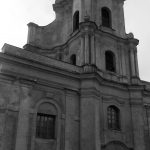
The Augustines established themselves on this site in Vilnius Old Town after 1661. The monastery date from the late 18th centuryIn 1833-1842 the monastery housed the Vilnius Spiritual Academy. In 1859 it was converted into a Russian Orthodox Church of St. AndrewIn 1918 the church was returned to the Roman Catholics and renovated. After WWII the interior was destroyed during the installation of a ferroconcrete ceiling; the church was used as a warehouse in the Soviet timeAll photos are copyrighted by Vladislav B. Sotirovic© Vladislav B. Sotirovic 2019
Continue Reading
The organ, made by famous German master Adam G. Casparini in 1776, is one of the most valuable cultural monuments of Lithuania. The organ itself is the only surviving original 18th-century instrument in LithuaniaThe church has many Baroque frescoes. In the cupola, there is a multi-figural composition "Apotheosis of the Holy Spirit" (neo-Baroque, 19th century)The altars and the pulpit are lavishly decorated with round and relief sculptures and ornamentation All photos are copyrighted by Vladislav B. Sotirovic© Vladislav B. Sotirovic 2018
Continue ReadingKing Mindaugas Monument
The House of Signatories (Karol Sztral’s House)
Chapel of St. Casimir (exterior)
Lithuania – Geographical Center of Europe
The Old Arsenal in Vilnius
The Church of St. George the Martyr
Tyzenhauzų Str. building in Vilnius
The Bastion of the Vilnius Defensive Wall (II)
Presidential Palace
St. Johns’ Church
The Adam Mickiewicz Museum
Chodkiewicz Palace – Vilnius Picture Gallery & Lithuanian Art Museum
The Belfry of the Cathedral Basilica in Vilnius
The Hill of Three Crosses
Astronomic Instruments at the White Hall at Vilnius University
Vilnius Panorama of the Neris River
Evangelical Lutheran Church
Church of the Holy Cross & former Hospitaller Monastery
Church of Blessed Mary the Comforter and the Augustine Monastery
Dominican Church of the Holy Spirit (Interior)


